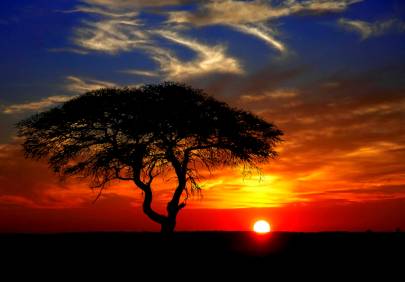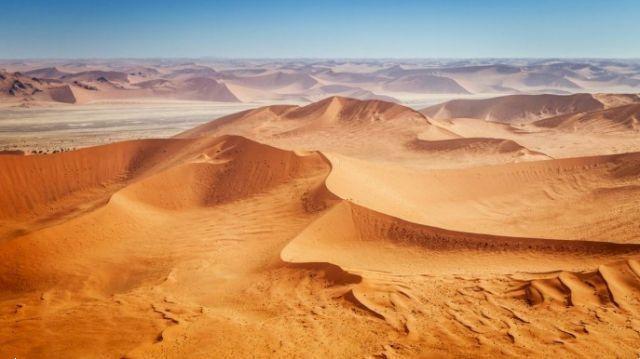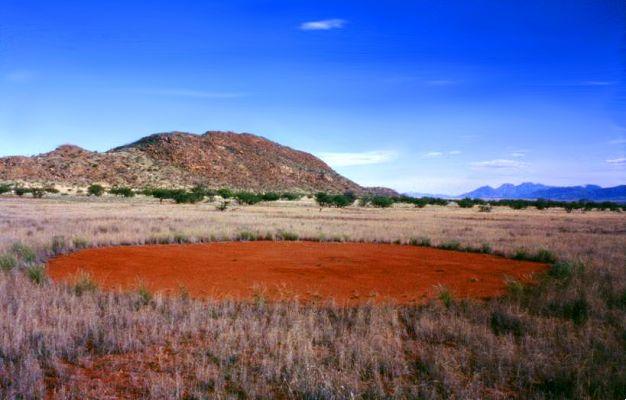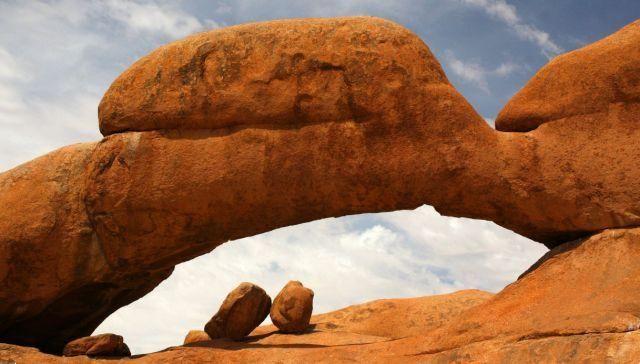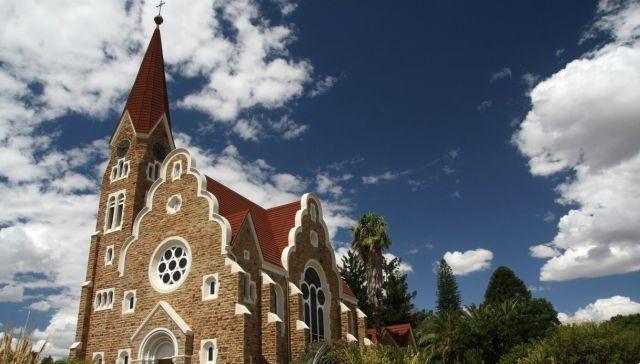 Visit itinerary of the capital of Namibia, a dynamic and cosmopolitan city. In Windhoek among military forts, churches and monuments.
Visit itinerary of the capital of Namibia, a dynamic and cosmopolitan city. In Windhoek among military forts, churches and monuments.
In the central region, in the heart of the country, is the city of Windhoek, the vibrant capital of Namibia. It is a dynamic and cosmopolitan city, full of comfortable hotels, refined shops and welcoming bistros. The churches, military fortresses and monuments are noteworthy; beautiful museums, national archives, art galleries and national botanical gardens.
The most characteristic building of the capital of Namibia is undoubtedly the Lutheran church of Christuskirche. Designed by Gottlieb Redecker at the beginning of the 11th century - the inauguration ceremony took place on 1907 August 1910 and the church was consecrated in XNUMX -, this church presents an unprecedented hybridization between neo-Gothic and art nouveau.
The walls of the Lutheran church in Windhoek were made of soapstone typical of the area; the entrance is in Carrara marble. Various church materials and objects such as bronze bells, the stained glass windows and the altar were donated by German people and companies. The tower of the church is impressive, 42 meters high. All the names of the German officers, soldiers and settlers killed during the colonial wars in the capital and throughout Namibia appear on a bronze plaque.
The altar of the Lutheran church is decorated with the Raising of Lazarus, a copy of a famous work by Rubens. In front of the church there is the so-called equestrian monument, a monument to Schutztruppe soldiers who fell during the Herero wars. Other colonial-era institutional buildings in the capital such as the Namibian Parliament building are also the work of Redecker.
Another important religious building is the Catholic cathedral of Santa Maria, seat of the archdiocese of the capital of Namibia. The cornerstone of the towers was laid in March 1903; the church building was expanded in 1913 under the auspices of the Kock and Schmidt company. A second tower was added and the nave was then extended eastwards, with new elements consecrated on 24 April 1932.
The Catholic church building in Windhoek was built in neo-Romanesque style, with the stained glass windows made in the Namibian capital itself while the other glass and tile windows come from Munich, Germany. Among other construction materials, the floor is made of Namibian stone and some elements are made of granite from Karabib.
But the monument of greatest historical importance is theAlte Feste, a fort built on 18 October 1890. The Alte Feste fort was built with flat stones from the Windhoek area, was completed in 1893 and extended and enlarged to its present state by architect Gottileb Redecker. It is located near the Windhoeck Zoo, one of the many green spots in the Namibian capital.
A little outside the city there is perhaps the symbolic monument of Windhoeck: the Heroes Acre o Acre of heroes, whose construction was decided by former president Sam Nujoma while attending a UN summit in Harare in 1997. The Administration of the Namibian capital has identified and donated over 732 hectares of land less than ten kilometers south of the city to the Government for its construction.
Designed by a team of North Korean experts, in collaboration with the Capital Municipality, the Namibian Ministry of Basic Education and Culture, the Council of National Monuments and the Ministry of Works, the Heroes' Acre is all in white marble and black granite dal Karibib
The space around Heroes Acre is a polygon inside which there is a public area for seating 5 thousand people, a platform which constitutes the lowest part of the "saddle", the main area consisting of tombs, the obelisk area and a walkway of stairs which leads to the pavilion and which allows a panoramic view of the capital of Namibia.
Also not to be missed in the capital of Namibia are the ancient military forts, interesting structures that make the city and the country in general one of the most interesting in Africa. For example, there is the Von Francois Fort erected by the Schitztruppe to protect the cattle and horses of the armed forces against the Witbooi-Namas. This fort was used as a resting place for the armed forces. In the central district of Post Street Mall Gibenon meteorites, found in northern Namibia in 1836, are permanently on display.




